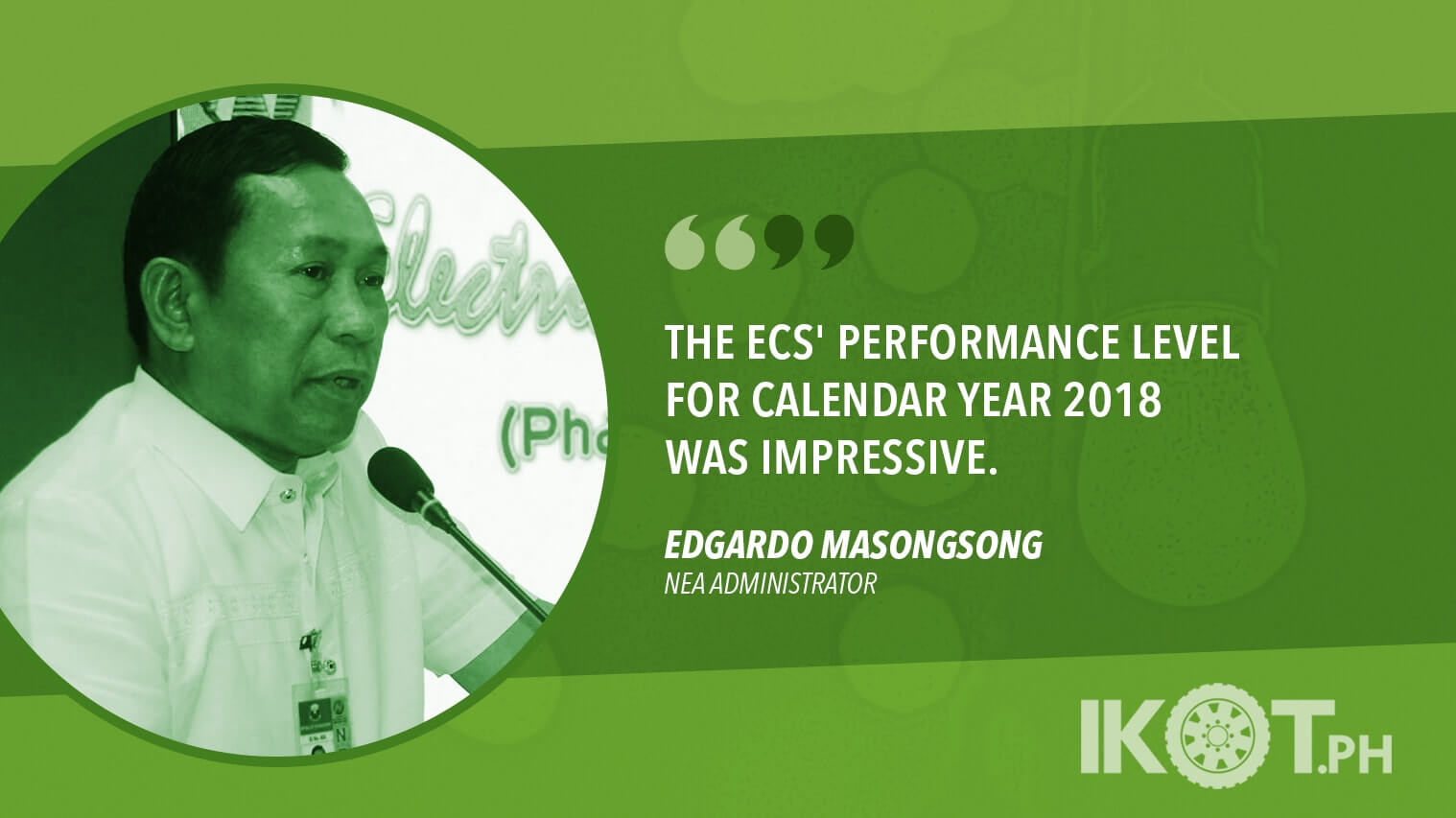The National Electrification Administration (NEA) has released its annual assessment of the overall operational performance of all the electric cooperatives (ECs) across the country, with 87 power distribution utilities receiving the highest ratings.
Results of the NEA’s 2018 Electric Cooperative Overall Performance Assessment and Size Classification showed that 87 out of 121 ECs were rated AAA. Of which, 24 ECs received a perfect 100 points in all the performance parameters.
All power distribution utilities in Regions VI (Western Visayas), VII (Central Visayas) and CARAGA attained AAA rating. Meanwhile, Regions I (Ilocos Region) and VIII (Eastern Visayas) emerged as the most improved regions after all of their ECs notched the AAA status.
“Most of the ECs sustained their exemplary performance.”
The 2018 assessment also showed that 83 ECs have maintained their AAA rating, while nine ECs manifested improvement in their scores in all performance levels. Also, 83 percent or a total of 100 out of the 121 ECs were evaluated either AAA, AA or A status.
Of the remaining 21 ECs, four improved their operational performance either from C to B or D to C; 12 power distribution utilities retained their performance level while five were rated either B, C or D.
Moreover, the number of Mega Large ECs increased to 66 from 64 in 2017. The Sorsogon II Electric Cooperative, Inc. (SORECO II) and Cebu III Electric Cooperative, Inc. (CEBECO III) improved from Extra Large to Mega Large ECs.
Meanwhile, the Quirino Electric Cooperative (QUIRELCO) and Mountain Province Electric Cooperative, Inc. (MOPRECO) from Large to Extra Large EC, and the Busuanga Island Electric Cooperative, Inc. (BISELCO) from Medium to Large EC.
In a memorandum to ECs, NEA Administrator Edgardo Masongsong expressed the agency’s satisfaction with the results of 2018 EC Overall Performance Assessment and Size Classification.
“Those ECs which need further improvements in overall performance should reassess existing programs.”
Masongsong said 2018 was very challenging for the electrification sector. He, however, commended the ECs of Regions I, VI, VII, VIII, and CARAGA “for excelling in their respective operations.”
“The ECs’ performance level for Calendar Year 2018 was impressive. Although there were lots of challenges the NEA and the ECs encountered during the year, most of the ECs sustained their exemplary performance,” Masongsong said.
“Those ECs which need further improvements in overall performance should reassess existing programs and implement more aggressive strategies to address major problems and concerns,” the NEA chief added.
Having supervisory powers over 121 ECs in the country, the NEA evaluates and determines their overall performance ratings using two criteria—Key Performance Standards (KPS), which account for 80 percent; and EC Classification (ECC), 20 percent.
These criteria were designed to measure the power co-ops‘ full compliance on four parameters, namely financial, institutional, technical, and reportorial requirements. The ECs were rated from AAA as the highest to D as the lowest.
The mandatory assessment on the performance of non-profit distribution utilities started way back in 1982 to keep track of the viability of their operations economically and financially. Since then, the rules and guidelines have evolved and changed significantly.
Earlier, the NEA proposed amendments to the existing guidelines to include the energization level of the EC among the key parameters.
Energization level is measured by the number of consumer connections a power co-op achieves under a given timeline based on the official reports and/or documents it submitted through the NEA Business Intelligence Technology (NEA-BIT) web portal.

